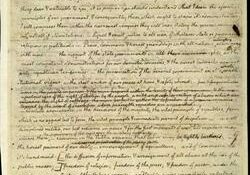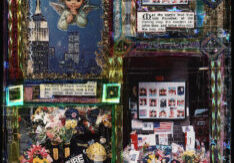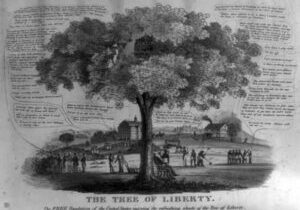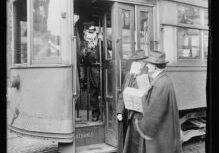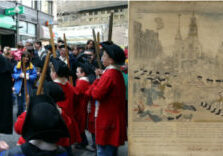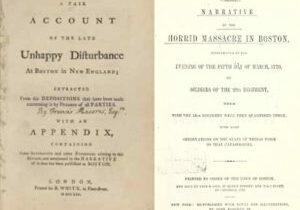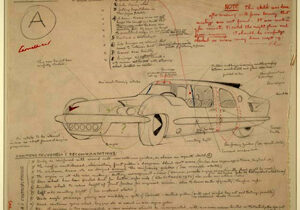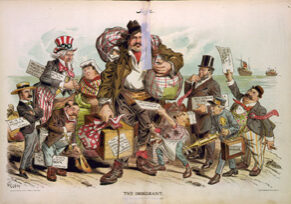Lesson Plans
Faction and Democracy
Students write a multi-paragraph argumentative letter in opposition to a proposed bipartisan Senate bill to eliminate factions outside of the two major parties based on the ideas put forth by James Madison in Federalist No. 10, George Washington in his Farewell Address, and Thomas Jefferson in his First Inaugural Address.
Engine Company 54 lost 15 men, 9/11/01
Through analysis of a collage created post 9/11, students consider how art can help us to process and understand difficult events. After, they collect everyday materials to create a piece of art and an accompanying curator note that reflects on a contemporary event.
Tree of Liberty
Students compare and contrast perspectives of the economics of slavery and free industry in the mid 19th century, then consider issues they might include under a tree of liberty for modern times.
Presidential Election Campaigns: Goal!
Students investigate presidential elections in the early 20th century, then read contemporary newspaper articles related to contemporary presidential election campaigns from different ends of the political spectrum and present their learning through creation of a modern political cartoon.
Pandemic and Civic Virtue: The American Red Cross and the Influenza Pandemic of 1918
Historical primary sources provide examples of civic virtue–that is, of citizens dedicating themselves to the common welfare, even at the cost of their own interests. By examining such sources, students can reflect on how civic virtue was practiced in the past, and how the concept might apply today.
News, Perspective, Bias – Beginning
Through the lens of the Three Little Pigs and the Boston Massacre, students think critically about how perceptions of events are shaped by the storyteller, then consider the importance of taking multiple perspectives into account when reviewing stories and drawing conclusions about events.
News, Perspective, Bias – Intermediate
Through the lens of the Boston Massacre, students think critically about presenter bias and how it can influence public perception. Next, they compare and contrast headlines presented by different news outlets and reflect on the importance of recognizing bias and taking multiple perspectives into account when reviewing stories and drawing conclusions about events.
News, Perspective, Bias – Advanced
Through the lens of the Boston Massacre, students think critically about presenter bias and confirmation bias to understand how they can influence public perception. Next, they compare and contrast contemporary news stories presented by different outlets and reflect on the importance of recognizing bias and taking multiple perspectives into account when reviewing stories and drawing conclusions about events.
Motor Vehicle Safety
Students analyze safety features on a car design prior to national standards, investigate motor vehicle safety legislation over the years, then consider what safety features you would include on a modern-day motor vehicle.
The Immigrant: Acquisition or Detriment?
Students investigate historical and contemporary pros and cons of immigration and reflect on your own views of the issue.
